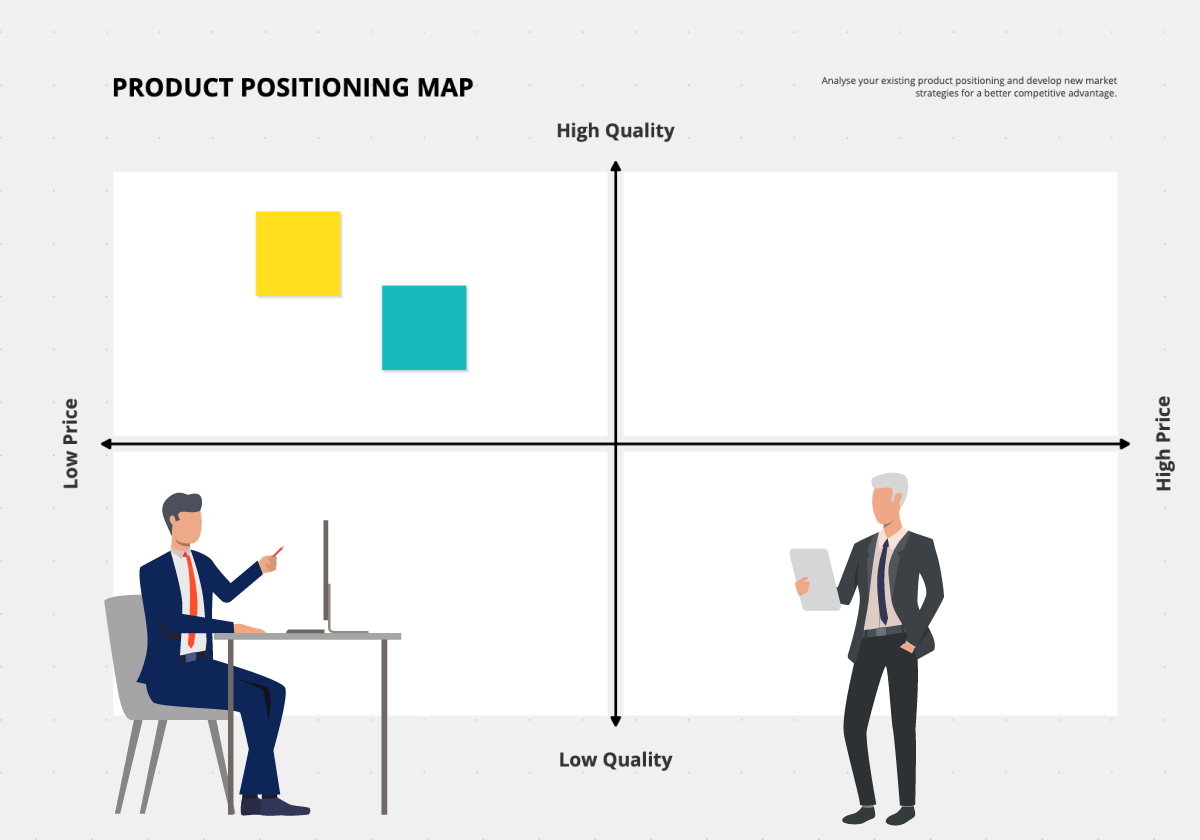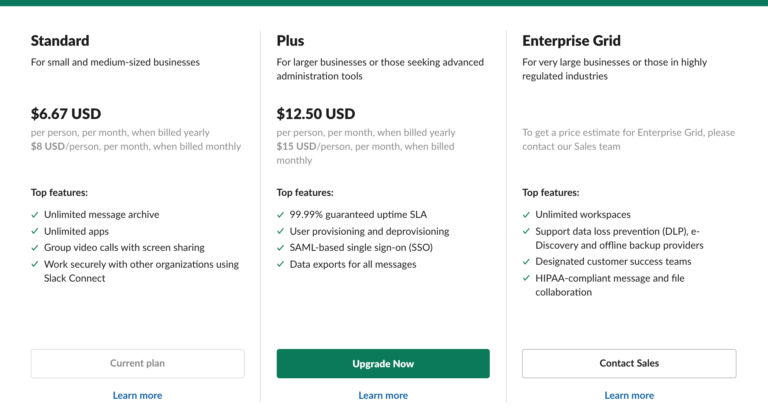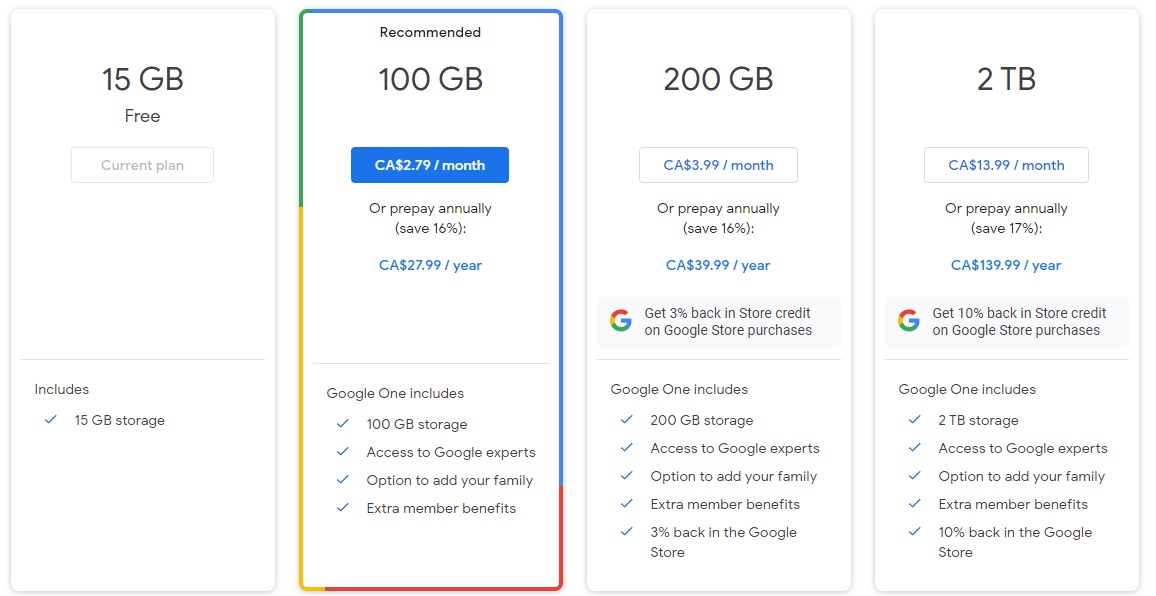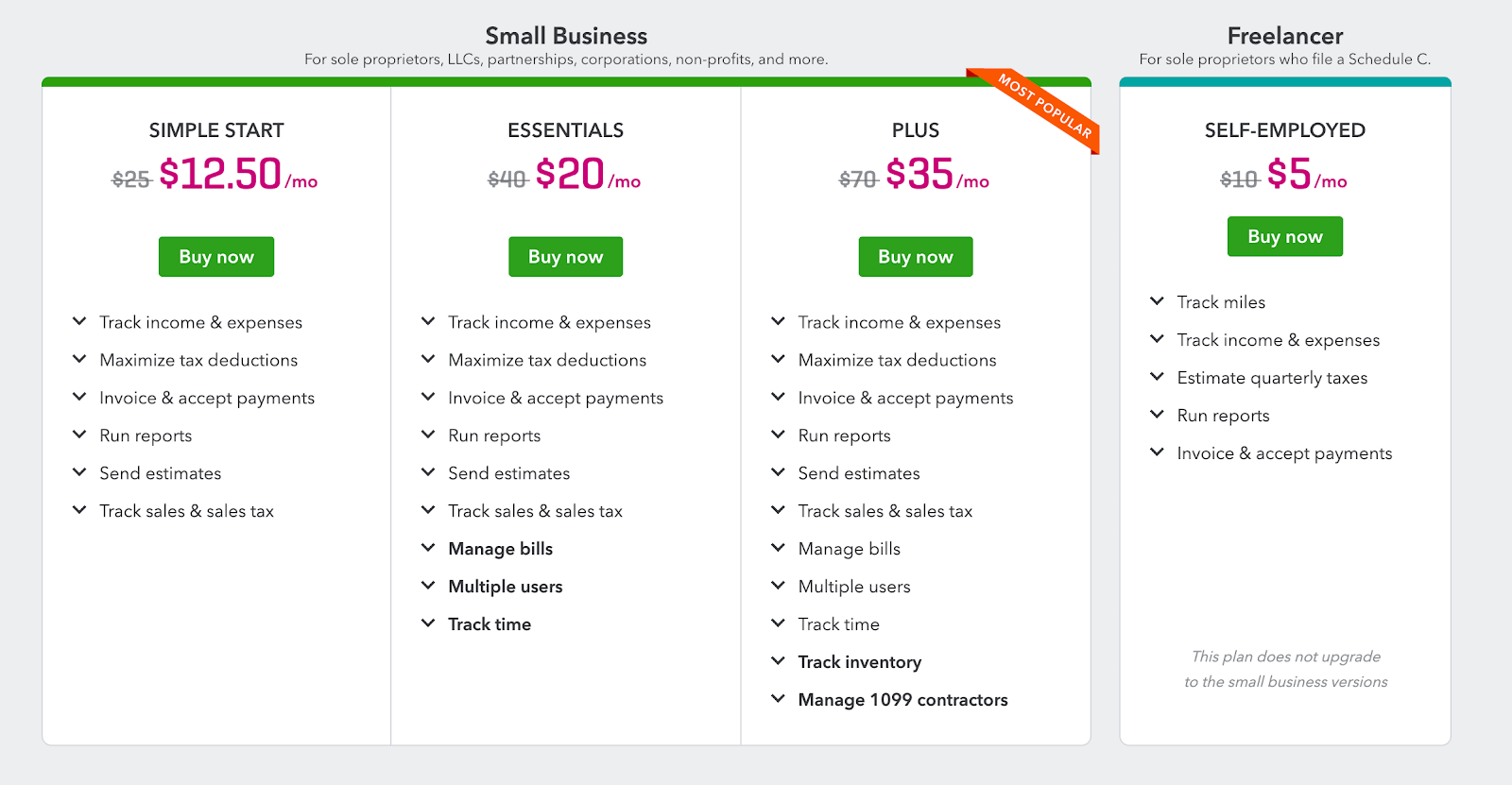Build your customer referral program without the dev time
Sign up for a free trial of GrowSurf to lower your customer acquisition costs, increase customer loyalty, and save gobs of time.
Launch Your ProgramWhat makes a successful SaaS pricing strategy? It’s not as straightforward as you may think. We often talk about how important it is to price our products correctly, but it's much more difficult to understand the “why” behind why we price software products the way we do.
If you are a company with physical products, it can be easier to calculate the cost to produce your product and come up with a price to sell your product on the shelves. But, software pricing is much trickier since there is no direct cost of goods sold associated with producing the software (besides labor and R&D). This makes value-based pricing strategies crucial for SaaS companies to maximize revenue based on the perceived value to customers, rather than just covering costs.
So, how do you price your software just right? Before digging into specific pricing models and strategies, it's important to first understand the key factors that should shape your overall pricing approach:
This is a guest contribution by Ryan Gould, Vice President of Strategy and Marketing Services at Elevation Marketing .
The pricing process is a part of your overarching marketing strategy, and it is the process of determining how much a company will charge customers for a product or service. It's a way of deciding what price point will most likely influence customers to buy your software from you — instead of the competition. An effective SaaS pricing strategy aligns your pricing model and tactics with your target market's needs and willingness to pay, while achieving your revenue goals and outcompeting rivals on value.
So, what factors should you look at when pricing your software? Many factors come into play when creating an effective pricing strategy including:
Because of this, creating an effective pricing strategy can be challenging for many software companies today. Some common pitfalls that cause SaaS companies to miss the mark with their pricing include:
Many software companies lean heavily on customer acquisition (especially startups). They may try to collect more acquisitions through pricing strategies like being a freemium service or offer free trials. But, did you know that customer monetization and retention has 2-4x more impact than customer acquisition? While acquisition is important, an effective pricing strategy should prioritize maximizing customer lifetime value through smart packaging, value-based pricing, and reducing churn.

Image Source: HotJar
This means that the focus shouldn’t be on acquisition but instead monetization and retention. Those two key elements are going to be what propels SaaS companies forward to improve their bottom line.
This just goes to show that when you're establishing your pricing strategy, you'll want to think way beyond getting your customer's foot in the door. You'll instead want to think about how you can keep them loyal to your software platform and wanting to stick around for more by delivering sustained value over time. Let's take a look at the key phases of creating an effective, holistic SaaS pricing strategy with monetization and retention as priorities:
Before anything else, you need to clearly define and articulate the key benefits and value your SaaS product delivers to customers. What are the major pain points or problems it solves? How does it improve workflows, efficiency, or results compared to alternatives? Getting crystal clear on your unique value proposition is critical, as it will shape every other aspect of your pricing strategy.
With your value prop defined, you can then map out your desired product positioning in the market. Do you want to be positioned as a premium, innovative leader? A cost-effective option for budget-conscious buyers? The best all-around value? Your positioning should align with and reinforce your core value proposition.
It can also be valuable to map out your key competitors on this positioning spectrum to identify any gaps or opportunities to differentiate. For example, if most competitors are targeting the premium end of the market, there may be an opening to position yourself as the superior value option.
There is no universally right or wrong positioning - it depends on your specific value proposition and the needs of your target market. For example, a product focused on enterprise scalability and advanced functionality may be an ideal fit for premium pricing. But a product designed for simplicity and ease-of-use could be better positioned as a cost-effective solution for small businesses. Ultimately, your positioning should resonate with and attract your ideal customer personas.

Image Source: ConceptBoard
With your value proposition and positioning defined, the next critical step is to thoroughly understand the needs, behaviors, and willingness to pay of your target market. This market research should cover:
You can find out who your customers are by asking yourself a few questions like:
Surveys, interviews, and analysis of existing customer data can help answer these questions and build rich buyer personas to guide your pricing and packaging decisions.
Fun Fact: 93% of companies exceed lead and revenue goals by using well-researched buyer personas. However, it's important that these personas go beyond surface demographics to deeply understand the target market's needs, pain points, buying criteria, and willingness to pay for your specific value proposition.
With a clear value proposition and deep understanding of your target market, you can now evaluate the optimal pricing model and packaging strategy to capture value and achieve your goals. Some key considerations:
This is where you'll synthesize your value prop, positioning, target market research, and business objectives into a cohesive go-to-market pricing structure.
Whether you're selling software to large corporations, small businesses, or individual users, understanding and optimizing your SaaS pricing strategy is essential to maximizing revenue and growth. The basic idea is to thoughtfully package your product's features and capabilities in a way that captures value for your business while staying competitive and aligned with your target market's needs and willingness to pay.
Selecting a pricing structure should be based on your target user personas, key performance metrics like customer acquisition costs and lifetime value, and overarching business goals like rapid growth, maximizing profitability, or something else. Whether you opt for a flat-rate model, usage-based pricing, tiered packaging, or a hybrid approach will depend on what best aligns with your specific situation and objectives. Here are some of the most common SaaS pricing models to consider, along with their potential pros and cons for your business:
Sign up for a free trial of GrowSurf to lower your customer acquisition costs, increase customer loyalty, and save gobs of time.

There are several common pricing models used by SaaS companies, each with its own potential benefits and tradeoffs to consider based on your specific situation. Let's dive into the key models, when they may be a good fit, and real-world examples of each in action.
The pricing model examples below cover usage-based, flat-rate, tiered, per-user, per-feature, and freemium approaches. As you review each, consider how well it may align with your specific value proposition, target market's needs and willingness to pay, and overarching business objectives. There is no one-size-fits-all, so selecting the right model(s) for your situation is crucial.
The first pricing model we are going to explore today is the “per user pricing model”. The per user pricing model charges companies based on how many users need to use their software platform. This pricing model works great for companies that want to help collaborative teams perform a certain task like analyzing data, messaging back and forth, or moving clients through a digital sales pipeline.
This pricing model would work wonders for companies who specialize in project management software systems, CRM platforms, or even company messaging tools.
Pros:
Cons:
Example: Slack has helped over 12 million users connect with their teammates across the globe through their business messaging platform. Instead of following a traditional pricing structure, Slack charges companies on a per user basis. As you can see below, Slack charges $6.67+ per active user, and this works for slack because they are more “user-focused” than other companies.

Image Source: Bare Metrics
Tiered pricing is one of the most common and best ways to price software platforms. If you're selling software that's going to change over time with new features and add-ons, then tiers could be very important to your pricing strategy.
Pros of the Tiered Pricing Model :
Cons of the Tiered Pricing Model:
Example: HubSpot is an all-in-one marketing and sales platform that helps companies scale their marketing and sales efforts through its user-friendly interface. When it comes to pricing, HubSpot uses the tiered pricing model to offer their customers different pricing tiers to best fit their business needs at the moment. The more features your business needs, the more it will cost to use the HubSpot all-in-one platform. But if companies are just starting out, they can use the HubSpot starter pack to decide if they want to move up in tiers or not later down the road.

Image Source: HubSpot
Example 2: Workello is a platform for outsourcing your entire content production operation. They have 2 pricing tiers based on usage and also additional premium features. Note that they offer discounts for annual rates and default to annual pricing here. This can be a very effective tool in increasing revenue, reducing churn and building brand affinity.

Image Source: Workello
With usage-based pricing, customers are charged based on their actual usage of the product or service each billing period. This could be tracked via storage consumption, number of transactions, API calls, or another usage metric aligned with how they derive value from the product.
This model is a good fit for products with highly variable usage patterns across customers, or where costs can scale up significantly based on usage levels. It provides a natural way to align pricing with value received. This pricing model works wonders for cloud-based storage companies like Google, Amazon AWS, and Apple because users use these sites to backup documents, photos, videos, presentations, and more.
If these companies charged a flat price, they wouldn’t be able to bring in as much revenue as they would with a per storage pricing model. Here are some of the benefits and drawbacks of the storage pricing structure.
Pros of the Per Storage Pricing Model:
Cons of the Per Storage Pricing Model:
Example: Google allows users to use up to 15 GB of data for free before making them pay for extra storage. Having a 15 GB freemium option works well for Google because it allows users to adequately try out their cloud-service platform before paying for more storage space. Once a customer has used up the free storage space, they can opt-in to paying for more room to hold all of their digital assets in one place.

Image Source: Google
The feature-based pricing model segments pricing options based on which product features and capabilities are included in each tier or package. This model can work well for products with a diverse array of potential features that may appeal to different customer segments. For example, a marketing software suite could have tiers with increasing levels of functionality for email, social media, analytics, and more.
However, it's important to thoroughly understand which features deliver the most value to your target personas. If key value drivers are locked in higher tiers, it could deter adoption. And if most value is in the base tiers, it provides little incentive to upgrade.
Pros of the Feature-Based Pricing Model:
Cons of the Feature-Based Pricing Model:
Example: Quickbooks accounting and bookkeeping platform helps businesses manage their transactions and send invoices to customers. Instead of pricing their product per user, they price based on software functionality. Below, you can see how their pricing packages are set up. As the user pays more for a different package, the user will also get access to features that the other packages below it do not offer. Many companies use the feature pricing model because it makes it easy to upsell current customers into buying a bigger package.

Image Source: ChargeBee
In the flat-rate pricing model, SaaS companies charge one price to all its software customers. This simplifies the pricing process for both the business and end-customer. With this structure, there are generally no feature add-ons to choose from because the package deal includes everything already.
Pros of the Flat-Rate Pricing Model:
Cons of the Flat-Rate Pricing Model:
Example: Basecamp business management software is a great example of a SaaS company who uses flat-rate pricing. This pricing structure works well for Basecamp because it’s easier to sell and simplifies the decision-making process for their customers.

Image Source: ChargeBee
So, what pricing model should you use? Well, it depends on your goals.
If you are still struggling to select a pricing strategy that best fits your business, try going back through the 3 step process again:
Growing your SaaS company doesn’t have to be complicated, and with this article, we hope you have gained a better insight into the world of pricing.
Looking to get consistent growth from an ever-expanding user base? Sign up for our 14-day free trial to try out our referral program software! (No credit card required.)

Sign up for a free trial of GrowSurf to lower your customer acquisition costs, increase customer loyalty, and save gobs of time.
Launch Your Program
GrowSurf is modern referral program software that helps product and marketing teams launch an in-product customer referral program in days, not weeks. Start your free trial today.
If you run a SaaS business, your churn rate is the key indicator of business health and growth potential. We explore what it means and how to calculate it.
Feeling lost with lead generation for your B2B SaaS? These 10 commandments will serve as a guide for you in that process.
Referrals marketing works because it's based on human psychology. Customer referrals will still be effective 100 years from now and here's exactly why.